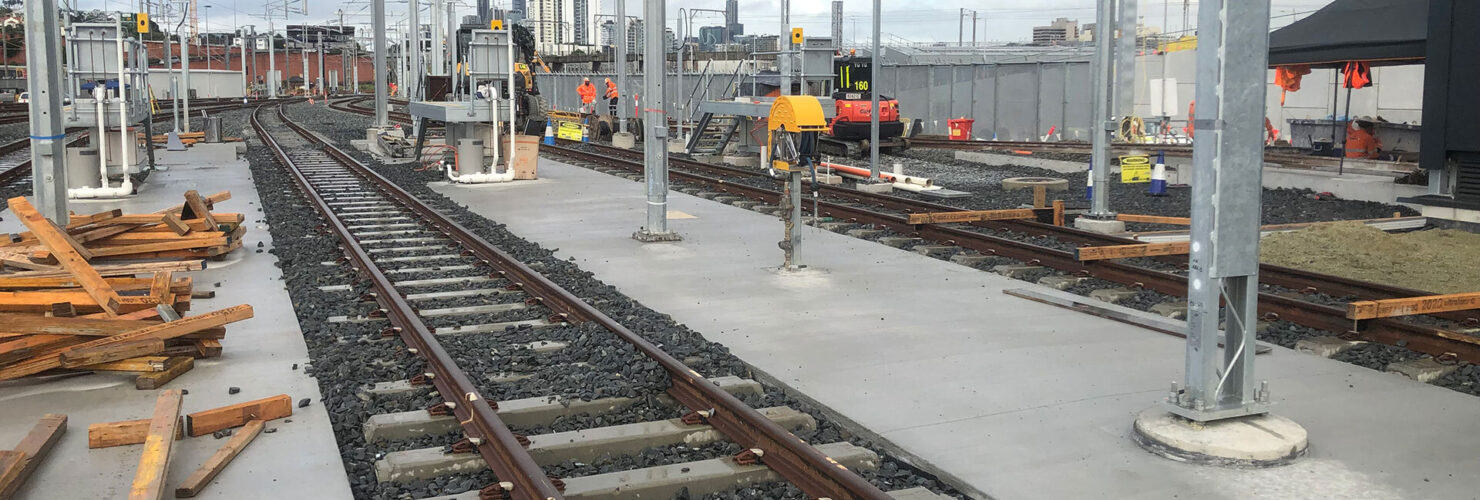Monday, November 28, 2022
Safety Message: Runaways within and from yards and sidings
ONRSR is highlighting the risk of rolling stock runaways in yards and sidings and detailing a range of effective controls.

As per ONRSR’s Notifiable Occurrence Reporting Requirements Guideline, a runaway is defined as:
- A runaway of a train or rolling stock on or onto the running line.
- A runaway in a yard that occurred in proximity to people and the nature of the runaway placed them at risk of injury from the train or rolling stock.
Runaways can result in major incidents including injuries and fatalities.
In railway yards and sidings, increased risks resulting from runaways can occur when the rail siding is:
- close to a cliff or embankment where a runaway could fall from height
- close to or has the possibility of colliding with rail traffic e.g., such as connecting to the running line
- close to or has the possibility of colliding with road traffic e.g. such as being next to, adjacent or above a road used by cars, trucks, road vehicles)
- next to or close to areas where people congregate e.g. such as a buildings, station terminus, etc).
- on a gradient which can increase the speed or likelihood of a runaway.
CAUSES AND CONTRIBUTING FACTORS
The causes of runaways can be classified into organisational, technological, environmental and individual factors.
1. Organisational factors e.g.
- Inadequate controls put in place e.g. not adopting or implementing controls to manage runaways.
- Use of controls being inadequate to address the risk e.g. not adopting or implementing controls that are higher on the hierarchy of controls.
- Failure to implement an effective maintenance regimen of controls e.g. maintenance of braking systems or derailers.
- Inadequate or unclear procedures or rules such as for example, not specifying the number of hand brakes that need to be applied when securing a train at a particular location.
- Inadequate training on operating train braking systems, or train braking and coupling procedures.
- Inadequate culture or leadership in providing policies, processes, procedures and practices for securing rolling stock.
2. Technological or equipment factors e.g.
- Braking system faults.
- Failure of derailers and catchpoints.
3. Environmental factors e.g.
- Yard or siding built on a downhill gradient.
4. Individual factors e.g.
- Fatigue or personal issues resulting in train crew error and/or miscommunication.
- Train crew not following procedures to secure rolling stock.
- Driver suffering from an acute medical episode such as for example, fainting or a heart attack.
CONTROLS
While not exhaustive and given the range of operational environments within the Australian rail industry, the following controls should be noted. RTOs must consider a range of factors, including the likelihood of the hazard and the degree of harm to determine what controls are reasonably practicable to implement (see the ONRSR Guideline – Meaning of duty to ensure safety so far as is reasonably practicable SFAIRP for more information).
Elimination:
While elimination and substitution controls are limited, there are several engineering and administrative controls that can be put in place to reduce the risk
Engineering controls:
The following engineering controls can reduce the risk:
1. Rail infrastructure controls
- Powered catch points and derailers which prevents unauthorised movement and divert or derail the train safely. These systems can be interlocked with the signalling system.
- Unpowered points, derailers and catchpoints which divert or derail a train during unauthorised movements.
- Terminal stops and buffer stops and mounds which prevent movement of the train past the end of the line during an unauthorised movement - these are usually for when the train or rolling stock moves past the end of the siding (not onto the mainline.
2. Rolling stock controls
- Driver Safety systems such as vigilance or deadman systems.
- Braking and Train Protection Systems including mechanical systems such as trip cocks, electronic onboard TPS, compressed air systems, coupling systems (usually more applicable on the mainline).
- Rollaway protection including parking and handbrakes.
3. Administrative controls
- Procedures governing coupling and uncoupling processes.
- Procedures governing the process for correctly securing rolling stock.
- Training of staff in the above procedures.
This information is provided as guidance only and may not be applicable to all rail transport operators.